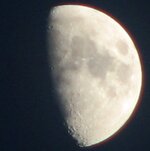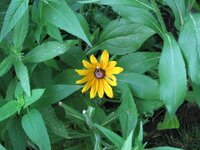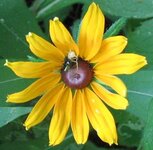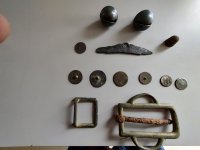Don in SJ
Silver Member
- May 20, 2005
- 4,931
- 832
- Detector(s) used
- MINELAB SE Pro
- Primary Interest:
- All Treasure Hunting
It was a rather clear evening for June, so got the chaise lounge chair into position and tried the new camera out on the moon. I did no reading on what settings to try so I thought I would just go with the "Night Setting" Max Zoom with Digital Zoom also to fill up the frame.
The photo was taken at dusk, not nightime, when I tried it later, the moon was to white, which means I would have to play around with the EV settings I suppose but the mosquitoes told me "not tonight"
So, I will do some reading up and hope by the time the next full moon comes around that it is during a cloudless, low humidity evening and anticapate a nice cratered photo.
The second photo is of one of my daisy's that just opened up and IF I had known there was a spider in it eating a fly, I would have done a super macro of that, darn it...........
Don
The photo was taken at dusk, not nightime, when I tried it later, the moon was to white, which means I would have to play around with the EV settings I suppose but the mosquitoes told me "not tonight"

So, I will do some reading up and hope by the time the next full moon comes around that it is during a cloudless, low humidity evening and anticapate a nice cratered photo.

The second photo is of one of my daisy's that just opened up and IF I had known there was a spider in it eating a fly, I would have done a super macro of that, darn it...........
Don









